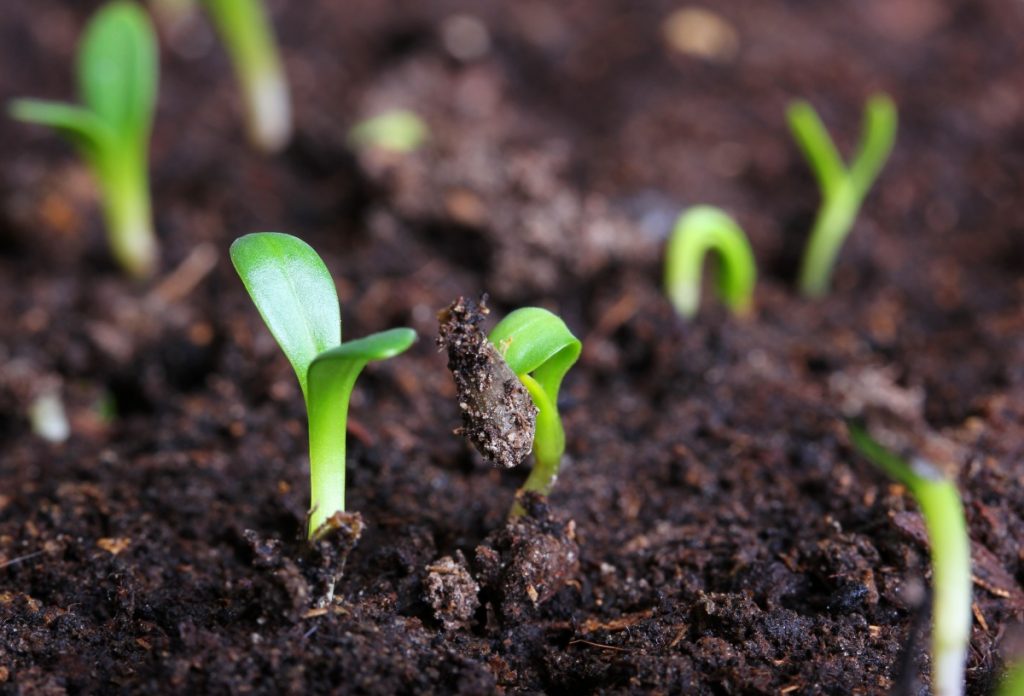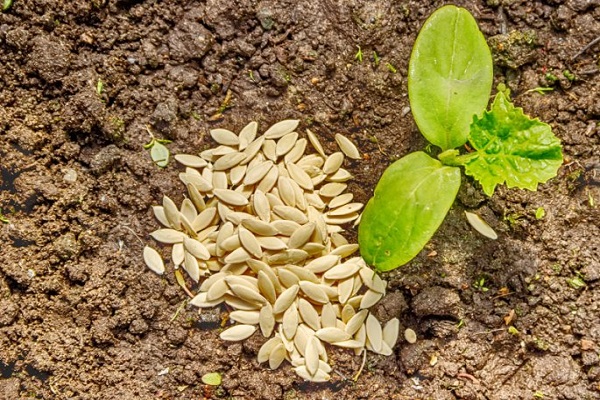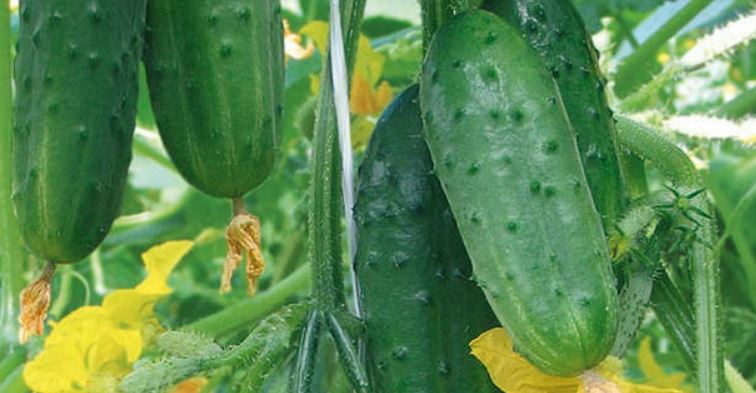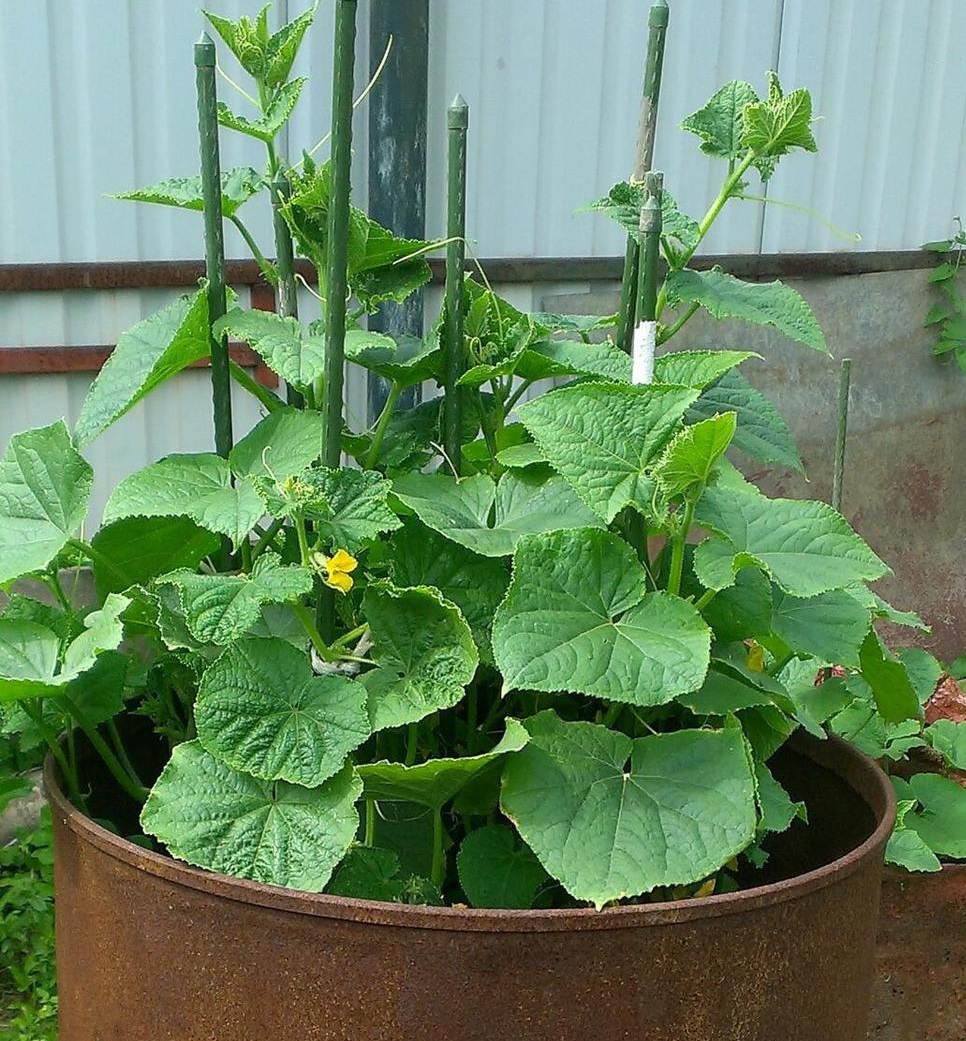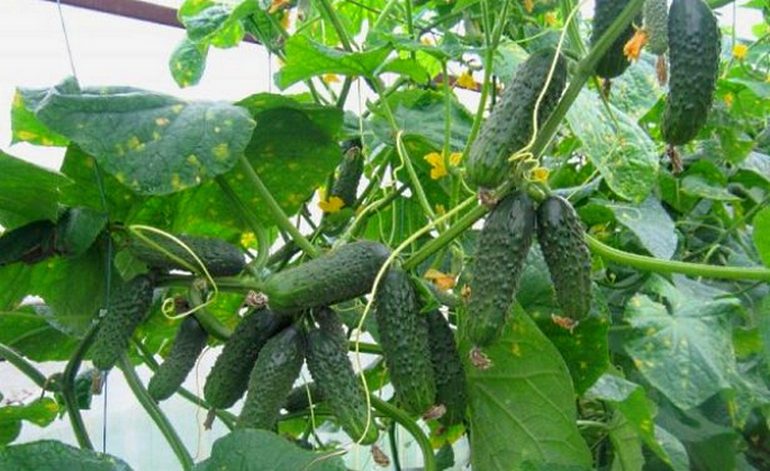Content:
Cucumbers are thermophilic vegetables that are quite capricious and vulnerable in the early stages of growth. Therefore, when growing them, in order to get a good harvest, certain rules must be followed. In the early stages of growth, the most difficult thing is to ensure that the cucumber sprouts successfully, and for this you need to properly prepare them for sowing.
Factors affecting germination
Conditionally, factors can be divided into internal - associated with seeds, and external, that is, climatic, as well as sowing conditions. All factors are approximately equal.
The germination of cucumbers can be affected by the following:
- Seed age. Although cucumber seeds can germinate successfully and being quite old - at 7-8 years old, over time, the percentage of their germination decreases. The older the seed, the less chances it will yield a harvest, however, a seed that is only a year old will also not give good shoots, so the optimal age for them is 2-3 years.
- The conditions in which the seeds were located. They need oxygen for life, as well as a low temperature - about 10-12 degrees, although they germinate at a much higher temperature. They should not be allowed to become damp, since then they will die, just as at high temperatures and in the absence of moisture. If the room is humid and warm, the seeds left for storage may germinate at the wrong time and, accordingly, deteriorate.
- The integrity and size of the seeds. Heavy, intact seeds germinate best. The heavier they are, the greater the chance of sprouting.
- Landing time. It is better to plant cucumbers when it is completely warmer and the ground is completely warmed up, since they need high temperature and humidity to ripen. After planting, it is better to cover the soil with a special film to create a greenhouse inside.
- The quality of the land. Infected or depleted soil will not be able to provide a good harvest, therefore, before sowing, either a new layer of soil is poured, or it is treated with special means.
- Pre-sowing seed treatment provides a higher yield level.
How many days to expect the first shoots
It is difficult to answer exactly on what day the cucumbers sprout. Germination time of cucumbers depends on germination factors. In particular, the higher the temperature during planting and on the following days, the faster the seedlings will hatch. In the best case, seed germination can be expected within 4-5 days after planting, and the maximum period is considered to be two weeks. If after this time no shoots have appeared, the cucumbers are planted again.
In addition to the temperature of the ground, the pre-sowing treatment of seeds can also affect the germination time. So, before planting, the seeds are treated with a solution of potassium permanganate (dilute a third of a tablespoon of potassium permanganate in two hundred milliliters of water) in order to destroy possible infections. In general, if there is a non-zero possibility of infecting cucumbers with any disease, it is best not to try to get rid of the infection, but to buy a new batch of seeds, since no specialized remedy can give a complete guarantee of curing the disease.
As a rule, with early germination of seedlings in cups or boxes, sprouts appear earlier than when planting seeds in open ground, since cucumbers are thermophilic plants, and the temperature inside the room is more stable and higher than outside.
Thus, before answering the question of how many days cucumber seeds germinate, you need to know under what conditions they were planted, and how they were processed before sowing.
How to sprout cucumbers quickly
Since it is in the early stages that this vegetable is especially vulnerable (a sprout that has survived the first weeks is most likely to develop safely and bear a harvest), the cucumbers are subjected to additional processing to speed up the ripening process. Seeds that have undergone a special pre-sowing preparation can either be planted in beds, or planted as seedlings on a windowsill, or left to warm up under special lamps.
Acceleration of the growth of cucumbers takes place in several stages - from seed treatment to sowing, but it must be remembered that the methods work as efficiently as possible in a complex.
Before starting germination, you need to select high-quality seeds. This is done as follows: first, intact large seeds without spots are selected, then they are placed in a saline solution (3 grams of salt per 100 ml of water), mixed. After 10-15 minutes, the ones that emerge are removed (they are of poor quality), and the ones remaining at the bottom are dried and prepared for disembarkation.
As a rule, home seeds or those whose origin is not clear are subjected to this selection. Store shops are tested during production. However, if you plan to plant a large number of cucumbers, you can check one of the packages, and if they turn out to be of high quality, you can safely plant vegetables.
Stimulation
This method is an improved seed steeping. The seeds are placed in water, in which they are preliminarily diluted with drugs-enhancers (or alternative folk remedies - aloe juice or tincture of valerian root), after which they are left for several hours.
Agate 25-K, Ambiol, sodium humate and many others can be used as a stimulant for the germination of cucumbers. There are a few things to consider before using stimulants:
- an improperly selected stimulant can harm the plant;
- it is necessary to follow the instructions exactly, because otherwise the seeds intended for planting will die.
If the soil is fertile and free of contamination, it is best to avoid using stimulants and instead use fertilizers at a later stage.
Soak
After how many days cucumbers sprout without soaking, and what will happen if you do without it. As a rule, this depends on the climate and on the condition of the soil. If you plant cucumbers in the most suitable conditions for them, they will sprout without additional action, but this will take significantly more time. Without soaking, it will take them up to two weeks to hatch, and with soaking, this can be reduced to a week of waiting.
Soaking provides the cucumber seeds with the right conditions to start hatching. For the greatest effect, a kind of greenhouse effect is created - that is, the seeds are placed not just in water and heat, but in a covered container. Before soaking, they are disinfected - for example, with a solution of potassium permanganate.
Technology: a small amount of water is poured into the container, a part of the fabric is placed in the water, on which the seeds are spread, and covered with the free end of the fabric. Alternatively, the seeds are immediately wrapped and then immersed in water.
After that, the container is covered with a lid (towel, bag, whatever) and removed to a warm, dark place.
The soaking process can last from several hours to one to two days. If all the water is absorbed, you need to carefully add a little more. As a result of soaking, the seed should swell. Immediately after soaking, the seeds must either be sown in a garden bed, or transplanted for use as seedlings, or change the conditions and proceed to germination.
Sowing
Soaking, germination and stimulation are elements of preparation for sowing. But you need to prepare for planting not only cucumbers, but also the earth itself.
There are several significant stages.
- Choosing the right sowing time. It depends on where and in what condition the cucumbers are planned to be planted. If the seedlings will be kept at home, in warmth and under the sun (otherwise the cucumbers may not rise), then it is necessary to start around the middle of April - the seedlings ripen for about four to five weeks. If you plan to plant cucumbers directly in the open ground, then you need to plant closer to the end of May, the beginning of June, when there will definitely not be any sudden changes in temperature.
- Preparation for sowing, which includes the selection of a site, preparation of a film (if an analogue of a greenhouse will be created), preparations for cultivating the land, as well as fertilizers.
- Soil cultivation. In the spring, before sowing, the soil is dug up, humus is added, and the soil is disinfected and fed. Cucumbers are fed with mineral fertilizers, such as superphosphate (amount - 40g per one square meter of the garden), potassium salt (25 grams per 1m, if wood ash has not been used before), ammonium nitrate (15g per meter) and specialized mineral fertilizers. After fertilization, you can also additionally disinfect the soil with a weak solution of potassium permanganate.
- Immediately before planting, the beds are additionally warmed up by pouring a small amount of hot water into each hole.
Seedling care
Seedlings are one of the most popular and convenient ways to plant cucumbers. Using this method, it is possible to ensure the survival of a larger number of seeds, since during the most dangerous early period for growth and development, they find themselves in conditions suitable for life.
However, the seedlings also need to be looked after. First of all, you need to decide which seeds will be planted - dry or already germinated. There is no significant difference between how to plant sprouted cucumber seeds, either dry or swollen, is not. Some growers sell dry seeds already ready for planting, covered with special fertilizers, and they should be planted just like that, without additional processing. Otherwise, it is advisable to at least simply disinfect the seed with potassium permanganate, and germination remains at the discretion of the gardener.
The containers are filled with earth (you can prepare the soil yourself, or you can buy a special substrate) by about two-thirds, place the grain inside and cover it with a layer of earth of 1.5-2 cm. Then it is carefully poured from a spray bottle (or just a thin stream from a bottle) with settled water.
Thus, the basic rules for growing seedlings are as follows:
- The seeds can be any, but it is still advisable to process them with potassium permanganate before planting.
- It is more convenient to use separate containers - cups, jars, pots - than one large box, since it is difficult to transplant cucumbers.
- After planting, it is necessary to cover the containers with any suitable object - a bag, glass, light board.
- After the first shoots appear, the plant is removed from under the cover.
- It is necessary to ensure that the seedlings do not dry out, water them regularly.
Seedlings are planted in open ground a month after sowing.
What to do if cucumbers do not sprout
There may be several reasons why the cucumbers did not sprout at all. Not only people far from gardening, but also experienced gardeners may not achieve the desired result.
The reasons why sprouts did not appear can be divided into three groups - due to problems with the soil, with the climate, due to mistakes made during preparation for sowing. Before you start worrying, you should wait two weeks after planting - the maximum time for sprouts to appear.
The main reasons why seeds can die:
- Cucumbers may not germinate due to soil diseases or small pests.
- Cucumbers may not germinate due to sudden changes in temperature.
- They may initially be of poor quality.
If within two weeks the cucumbers have not sprouted, you need to re-sow the area very quickly. Before these, you can carefully dig out a hole or several and check what happened to the previous seed. If it is chewed, it may be worth moving the beds to another area. Perhaps the seed did not begin to germinate, and then you can choose a more unpretentious variety. Watering cucumbers is necessary with warm water - this can also affect seedlings.
When re-sowing, it is better to pre-germinate the cucumbers, and additionally treat the soil with fertilizers.
